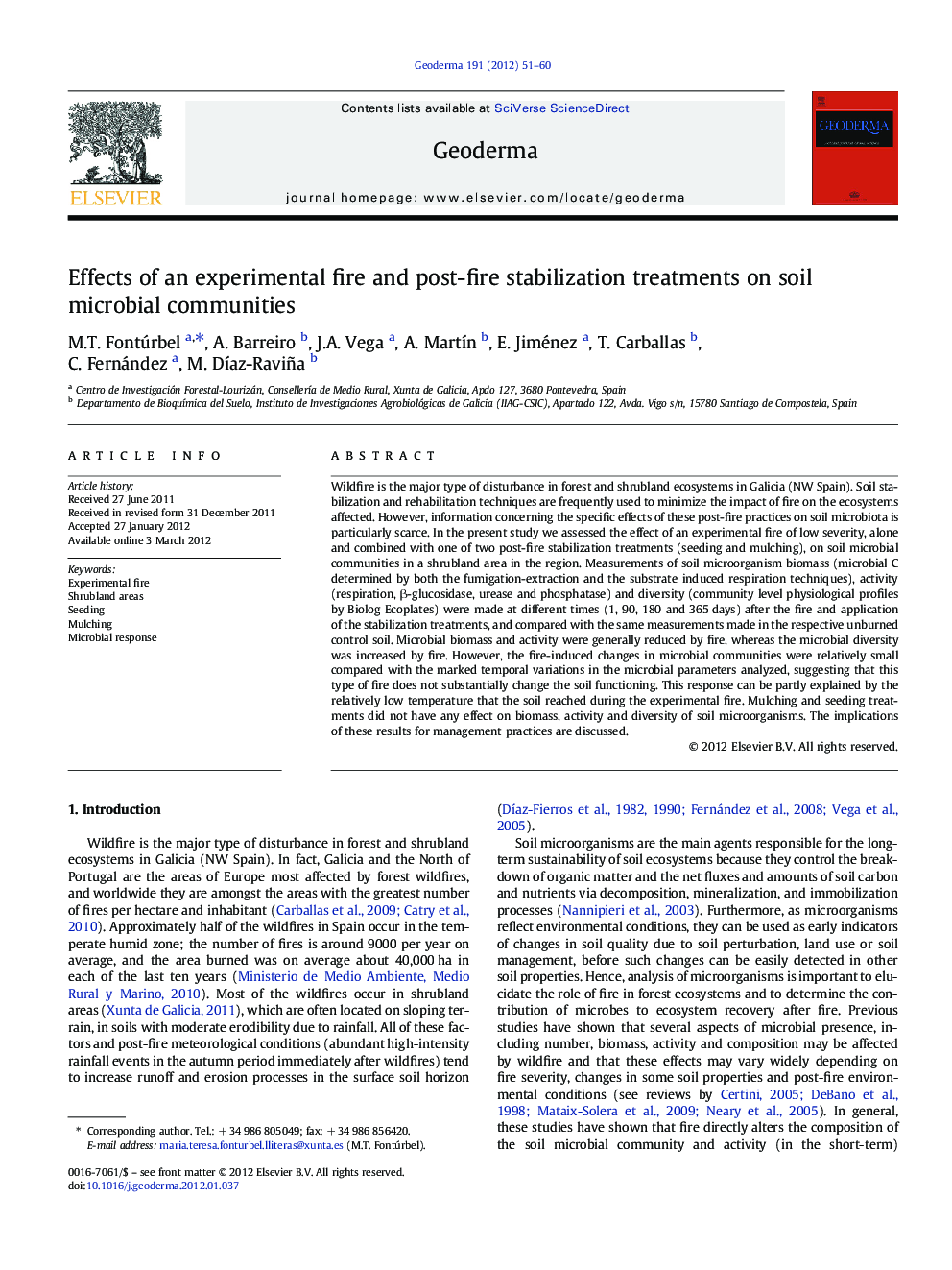| Article ID | Journal | Published Year | Pages | File Type |
|---|---|---|---|---|
| 4573706 | Geoderma | 2012 | 10 Pages |
Wildfire is the major type of disturbance in forest and shrubland ecosystems in Galicia (NW Spain). Soil stabilization and rehabilitation techniques are frequently used to minimize the impact of fire on the ecosystems affected. However, information concerning the specific effects of these post-fire practices on soil microbiota is particularly scarce. In the present study we assessed the effect of an experimental fire of low severity, alone and combined with one of two post-fire stabilization treatments (seeding and mulching), on soil microbial communities in a shrubland area in the region. Measurements of soil microorganism biomass (microbial C determined by both the fumigation-extraction and the substrate induced respiration techniques), activity (respiration, β-glucosidase, urease and phosphatase) and diversity (community level physiological profiles by Biolog Ecoplates) were made at different times (1, 90, 180 and 365 days) after the fire and application of the stabilization treatments, and compared with the same measurements made in the respective unburned control soil. Microbial biomass and activity were generally reduced by fire, whereas the microbial diversity was increased by fire. However, the fire-induced changes in microbial communities were relatively small compared with the marked temporal variations in the microbial parameters analyzed, suggesting that this type of fire does not substantially change the soil functioning. This response can be partly explained by the relatively low temperature that the soil reached during the experimental fire. Mulching and seeding treatments did not have any effect on biomass, activity and diversity of soil microorganisms. The implications of these results for management practices are discussed.
► An experimental fire induced slight decreases in soil microbial biomass. ► Soil respiration and enzymatic activities also decreased slightly. ► C substrates microbial use slightly increased after fire. ► Temporal changes in these parameters were usually higher than those caused by fire. ► Post-fire mulching and seeding treatments did not modify soil microbial communities.
